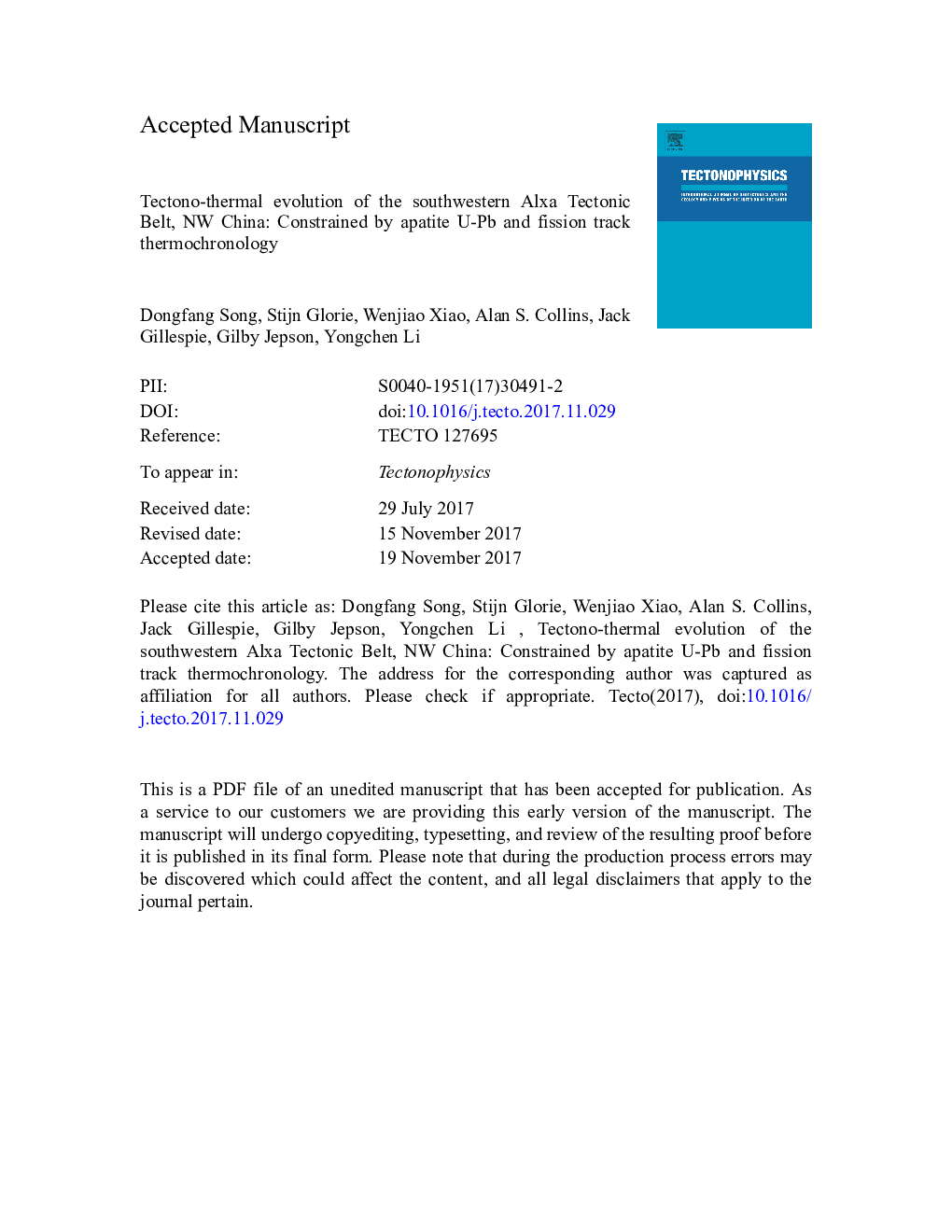| کد مقاله | کد نشریه | سال انتشار | مقاله انگلیسی | نسخه تمام متن |
|---|---|---|---|---|
| 8908843 | 1636687 | 2018 | 60 صفحه PDF | دانلود رایگان |
عنوان انگلیسی مقاله ISI
Tectono-thermal evolution of the southwestern Alxa Tectonic Belt, NW China: Constrained by apatite U-Pb and fission track thermochronology
دانلود مقاله + سفارش ترجمه
دانلود مقاله ISI انگلیسی
رایگان برای ایرانیان
کلمات کلیدی
موضوعات مرتبط
مهندسی و علوم پایه
علوم زمین و سیارات
فرآیندهای سطح زمین
پیش نمایش صفحه اول مقاله

چکیده انگلیسی
The Central Asian Orogenic Belt (CAOB) is regarded to have undergone multiple phases of intracontinental deformation during the Meso-Cenozoic. Located in a key position along the southern CAOB, the Alxa Tectonic Belt (ATB) connects the northernmost Tibetan Plateau with the Mongolian Plateau. In this paper we apply apatite U-Pb and fission track thermochronological studies on varieties of samples from the southwestern ATB, in order to constrain its thermal evolution. Precambrian bedrock samples yield late Ordovician-early Silurian (~ 430-450 Ma) and late Permian (~ 257 Ma) apatite U-Pb ages; the late Paleozoic magmatic-sedimentary samples yield relatively consistent early Permian ages from ~ 276 to 290 Ma. These data reveal that the ATB experienced multiple Paleozoic tectono-thermal events, as the samples passed through the apatite U-Pb closure temperature (~ 350-550 °C). We interpret these tectonic events to record the long-lived subduction-accretion processes of the Paleo-Asian Ocean during the formation of the southern CAOB, with possible thermal influence of the Permian Tarim mantle plume. Apatite fission track (AFT) data and thermal history modelling reveal discrete low-temperature thermal events for the ATB, inducing cooling/reheating through the AFT partial annealing zone (~ 120-60 °C). During the Permian, the samples underwent rapid cooling via exhumation or denudation from deep crustal levels to temperatures < 200 °C. Subsequent thermal events in the Triassic were thought to be associated with the final amalgamation of the CAOB or the closure of the Paleotethys. During the Jurassic-Cretaceous the study area experienced heating by burial, followed by renewed cooling, which may be related with the construction and subsequent collapse of the Mongol-Okhotsk Orogeny, or the Lhasa-Eurasia collision and subsequent slab break-off. These results indicate that the ATB may have been stable after late Cretaceous in contrast to the Qilian Shan and Tianshan. Finally, our results indicate differential exhumation scenario occurred across the southwestern ATB during the Cretaceous.
ناشر
Database: Elsevier - ScienceDirect (ساینس دایرکت)
Journal: Tectonophysics - Volume 722, 2 January 2018, Pages 577-594
Journal: Tectonophysics - Volume 722, 2 January 2018, Pages 577-594
نویسندگان
Dongfang Song, Stijn Glorie, Wenjiao Xiao, Alan S. Collins, Jack Gillespie, Gilby Jepson, Yongchen Li,